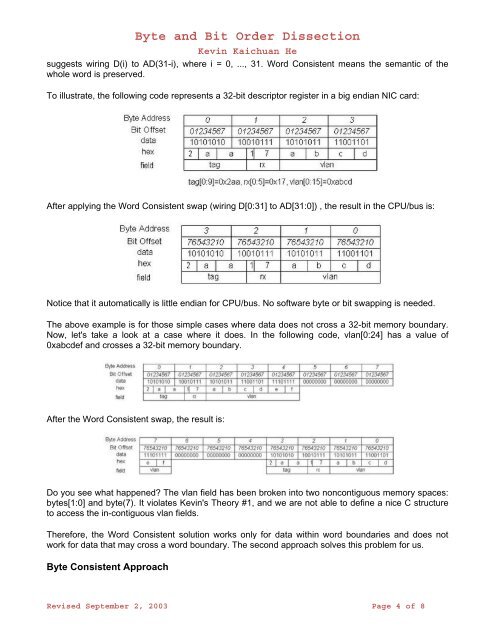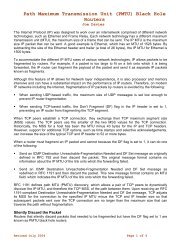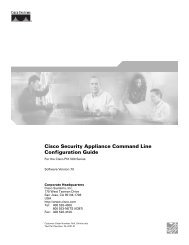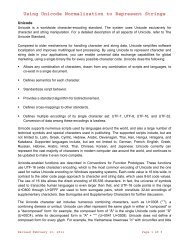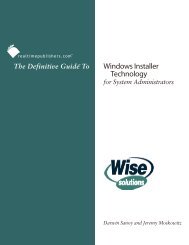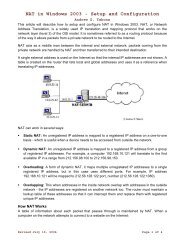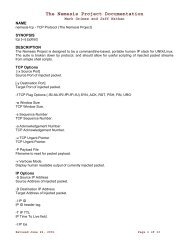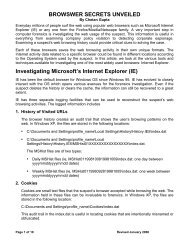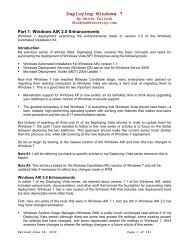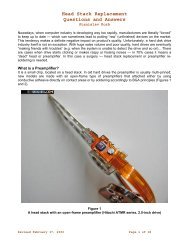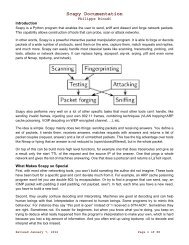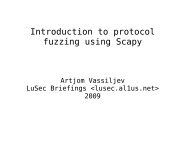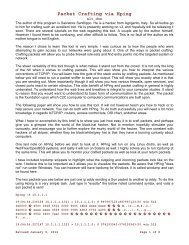Byte and Bit Order Dissection
Byte and Bit Order Dissection
Byte and Bit Order Dissection
You also want an ePaper? Increase the reach of your titles
YUMPU automatically turns print PDFs into web optimized ePapers that Google loves.
<strong>Byte</strong> <strong>and</strong> <strong>Bit</strong> <strong>Order</strong> <strong>Dissection</strong><br />
Kevin Kaichuan He<br />
suggests wiring D(i) to AD(31-i), where i = 0, ..., 31. Word Consistent means the semantic of the<br />
whole word is preserved.<br />
To illustrate, the following code represents a 32-bit descriptor register in a big endian NIC card:<br />
After applying the Word Consistent swap (wiring D[0:31] to AD[31:0]) , the result in the CPU/bus is:<br />
Notice that it automatically is little endian for CPU/bus. No software byte or bit swapping is needed.<br />
The above example is for those simple cases where data does not cross a 32-bit memory boundary.<br />
Now, let's take a look at a case where it does. In the following code, vlan[0:24] has a value of<br />
0xabcdef <strong>and</strong> crosses a 32-bit memory boundary.<br />
After the Word Consistent swap, the result is:<br />
Do you see what happened? The vlan field has been broken into two noncontiguous memory spaces:<br />
bytes[1:0] <strong>and</strong> byte(7). It violates Kevin's Theory #1, <strong>and</strong> we are not able to define a nice C structure<br />
to access the in-contiguous vlan fields.<br />
Therefore, the Word Consistent solution works only for data within word boundaries <strong>and</strong> does not<br />
work for data that may cross a word boundary. The second approach solves this problem for us.<br />
<strong>Byte</strong> Consistent Approach<br />
Revised September 2, 2003 Page 4 of 8


